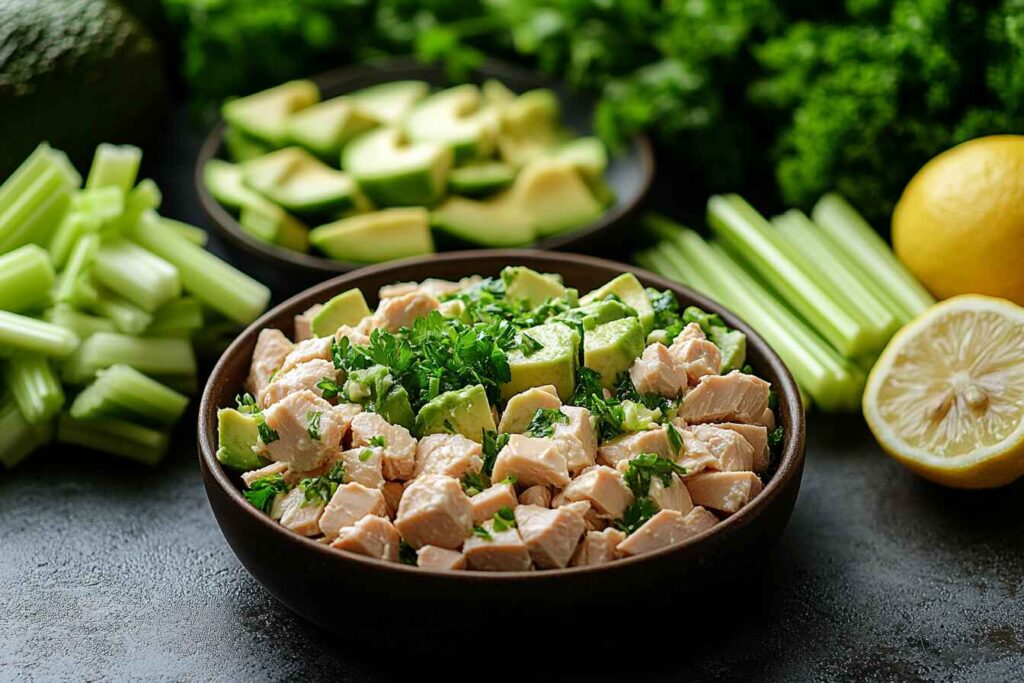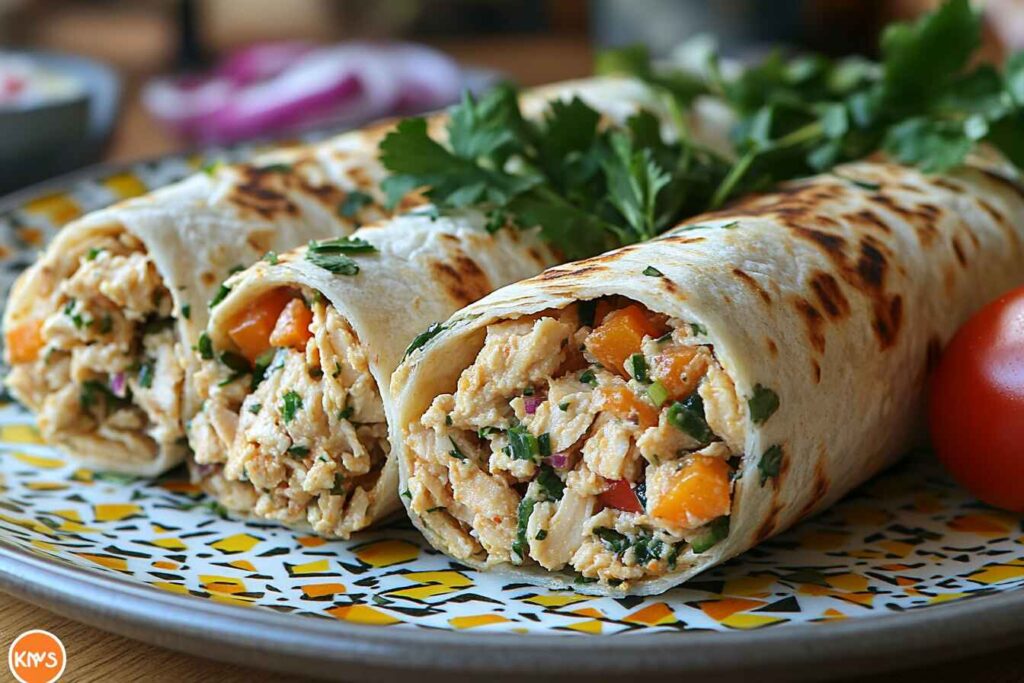Have you ever wondered why tuna salad is such a go-to option for people trying to eat healthier? It’s like the Swiss army knife of meals—versatile, delicious, and packed with nutrients that your body craves. Whether you’re on a mission to shed a few pounds, boost your protein intake, or just whip up a quick and satisfying meal, tuna salad has got your back.
Table of Contents
Why Tuna Salad is a Popular Choice for Healthy Eating
Think about it—tuna salad ticks all the right boxes. It’s quick to prepare, easy to customize, and perfect for every occasion, from a casual lunch to a post-workout snack. Plus, it’s loaded with nutrients that support a healthy lifestyle. But what makes it truly special? The answer lies in its nutritional profile.
Understanding the Nutritional Profile of Tuna
Tuna, the star of this dish, is a nutritional powerhouse. It’s low in calories, high in protein, and packed with essential vitamins and minerals. A single serving of tuna provides:
- Protein: About 25 grams per 3-ounce serving—hello, muscle building!
- Omega-3 fatty acids: Heart-healthy fats that reduce inflammation and support brain health.
- Vitamins: A generous dose of B vitamins, especially B12, which is crucial for energy production.
- Minerals: Selenium and potassium, essential for overall health.
But let’s not forget about the other ingredients that make tuna salad shine. From crunchy veggies to creamy dressings, every component contributes something unique to the dish.
Key Nutrients in Tuna Salad
So, what makes tuna salad such a nutritional jackpot? Let’s break it down by its key players.

High-Quality Protein for Muscle Building
Protein is the building block of your muscles, and tuna is one of the best sources out there. Imagine your muscles as a team of construction workers—protein is like the bricks and mortar they need to keep things sturdy and strong. Plus, it keeps you full, so you’re less likely to snack on junk food later.
Omega-3 Fatty Acids for Heart Health
We’ve all heard about the magic of omega-3s, right? These healthy fats are like the oil that keeps your body’s engine running smoothly. They reduce bad cholesterol, lower blood pressure, and even improve brain function. Not bad for a little fish, huh?
Essential Vitamins and Minerals in Tuna Salad
Tuna salad isn’t just about protein and healthy fats. It’s also a great source of essential vitamins and minerals. The B vitamins in tuna help convert food into energy, while selenium acts like an antioxidant, protecting your cells from damage. Add some potassium-rich veggies, and you’ve got a meal that supports heart health and electrolyte balance.
The Role of Fiber in Tuna Salad Ingredients
While tuna itself doesn’t contain fiber, the salad ingredients you choose can fill that gap. Think about adding crisp cucumbers, shredded carrots, or a handful of leafy greens. Fiber is like a sponge for your digestive system, soaking up all the bad stuff and keeping things moving along smoothly.
Benefits of Tuna Salad for Different Lifestyles
One of the coolest things about tuna salad is how it fits into so many different lifestyles. Whether you’re a gym enthusiast, a busy parent, or someone just looking to eat better, there’s something here for everyone.
Tuna Salad for Weight Management
If you’re watching your waistline, tuna salad is a dream come true. It’s low in calories but high in nutrients, which means you can eat a satisfying portion without feeling guilty. Plus, the protein keeps you full, so you’re not reaching for snacks an hour later.
Tuna Salad as a Quick and Convenient Meal
Let’s be real—life gets busy. Between work, school, and everything in between, who has time to cook elaborate meals? Tuna salad is like that friend who’s always there when you need them. It’s quick, easy, and requires minimal cleanup. Just toss your ingredients together, and boom—you’ve got a meal.
Tuna Salad for Active and Athletic Individuals
For athletes and gym-goers, tuna salad is a fantastic source of post-workout fuel. The protein helps repair muscle tissue, while the omega-3s reduce inflammation. Add some carbs like whole-grain crackers or a slice of bread, and you’ve got the perfect recovery meal.
Common Problems with Tuna Salad Nutrition
Okay, so tuna salad sounds pretty amazing, right? But like anything, it’s not without its pitfalls. Let’s talk about some common issues and how to avoid them.
Hidden Calories in Dressings and Add-Ons
Ever heard the saying, “The devil is in the details”? That’s especially true when it comes to tuna salad. Creamy dressings, cheese, and other add-ons can turn a healthy dish into a calorie bomb. It’s like ordering a salad and drenching it in ranch—kind of defeats the purpose, doesn’t it?
Mercury Concerns: Is Tuna Salad Safe?
Mercury is a natural element that can be harmful in high amounts, and unfortunately, tuna tends to have more of it than other fish. But don’t panic! As long as you stick to moderate portions and choose low-mercury options like skipjack tuna, you’ll be fine.
Balancing Sodium Levels in Tuna Salad Recipes
Canned tuna can be pretty salty, and if you’re not careful, your tuna salad might end up tasting like a salt lick. Look for low-sodium options, and rinse your tuna before mixing it with other ingredients. Trust me, your taste buds (and blood pressure) will thank you.
Sustainability and Choosing the Right Tuna
We all want to do our part for the planet, right? When it comes to tuna, that means choosing sustainably caught options. Look for labels like “pole-and-line caught” or “MSC-certified” to make sure you’re making an eco-friendly choice.
Solutions to Improve Tuna Salad Nutrition
Alright, so we’ve talked about the common problems with tuna salad. But don’t worry—there are plenty of ways to make it healthier and even more delicious. Let’s dive into some practical solutions that’ll take your tuna salad game to the next level.
Choosing the Right Type of Tuna for Optimal Nutrition
Not all tuna is created equal. If you’re aiming for the healthiest option, go for light tuna or skipjack tuna—they’re lower in mercury compared to albacore. Plus, you can find canned tuna packed in water instead of oil to cut down on unnecessary calories. Need some extra flavor? Add olive oil yourself—it’s a healthier choice!
Smart Swaps for Healthier Dressings
The dressing can make or break your tuna salad. Creamy mayonnaise is tasty, but it’s also loaded with fat and calories. Instead, try these smart swaps:
- Greek yogurt: A creamy, protein-packed alternative to mayo.
- Mashed avocado: Adds healthy fats and a delicious, creamy texture.
- Lemon juice and olive oil: A light, zesty option that enhances the natural flavors.
Experiment with spices like paprika, dill, or black pepper to keep things interesting without relying on calorie-heavy dressings.
Adding Superfoods to Your Tuna Salad
Want to level up your tuna salad? Toss in some superfoods! These nutrient-dense ingredients can boost the health benefits of your meal:
- Spinach or kale: Add a handful of greens for a fiber and vitamin boost.
- Chia seeds: Sprinkle these tiny seeds for extra omega-3s and fiber.
- Cherry tomatoes: Loaded with antioxidants like lycopene.
- Quinoa: A protein-packed grain that makes your salad more filling.
Think of these as the superhero sidekicks to your tuna—each one brings its own unique superpower to the table.
Tips for Preparing a Nutritious Tuna Salad
Now that you’ve got the ingredients sorted, let’s talk about how to put everything together for the best results. Tuna salad might be simple to make, but a few extra tips can take it from good to great.
Selecting Fresh and Healthy Ingredients
It’s all about quality. Fresh veggies, high-quality tuna, and healthy dressings are the foundation of a nutritious tuna salad. When choosing canned tuna, check the label for “wild-caught” and “sustainably sourced.” For veggies, go seasonal—they’re fresher and more flavorful.
Portion Control Tips for Balanced Meals
Tuna salad is so good that it’s easy to overdo it. But remember, even healthy foods can add up in calories if you’re not careful. Stick to a single serving of tuna (about 3-4 ounces) and balance it out with plenty of veggies or whole grains. If you’re making a sandwich, opt for whole-grain bread instead of white bread—it’s a small swap that makes a big difference.
Creative Recipe Ideas for Variety and Flavor
Bored of the same old tuna salad? Mix things up with these creative recipe ideas:
Recipe Ingredients Mediterranean Tuna Salad Tuna, cherry tomatoes, cucumbers, red onions, feta cheese, olives, olive oil, lemon juice. Avocado Tuna Salad Tuna, mashed avocado, lime juice, cilantro, diced red bell pepper. Keto Tuna Salad Tuna, mayonnaise, boiled eggs, celery, pickles, Dijon mustard.
Feel free to get creative—there’s no wrong way to make tuna salad!
Popular Variations of Tuna Salad
When it comes to tuna salad, there’s a version for every taste and dietary preference. Let’s look at some of the most popular variations you can try at home.
Classic Tuna Salad Recipe
The OG of tuna salads, this recipe keeps things simple and delicious. All you need is tuna, a little mayo, some celery for crunch, and a squeeze of lemon juice. Add salt and pepper to taste, and you’re good to go.
Mediterranean Tuna Salad with Fresh Vegetables
If you’re craving bold flavors, this Mediterranean twist is perfect. It’s loaded with fresh veggies, tangy feta, and briny olives, making it as colorful as it is delicious. Bonus? It’s naturally low-carb and packed with nutrients.
Avocado Tuna Salad for a Creamy Twist
Want to ditch the mayo but keep the creaminess? Enter avocado. Its buttery texture and healthy fats make it a perfect pairing with tuna. Add a splash of lime juice and some cilantro for a fresh, zesty kick.
Keto-Friendly Tuna Salad Options
For those on a keto diet, tuna salad is a dream come true. Mix your tuna with high-fat ingredients like mayo and boiled eggs, and add low-carb veggies like celery and pickles. It’s satisfying, delicious, and totally keto-approved.

Tuna Salad Nutrition in Different Diet Plans
One of the best things about tuna salad is how versatile it is. No matter what diet you’re following, there’s a way to make it work for you.
Tuna Salad in Low-Carb Diets
With its high protein content and low carb count, tuna salad is practically made for low-carb diets. Skip the bread and serve it in lettuce wraps or on a bed of spinach for a guilt-free meal.
Tuna Salad for Pescatarians
If you’re a pescatarian, tuna salad is a staple you can enjoy in countless ways. Add plenty of fresh veggies and whole grains to make it a balanced, nutrient-dense meal.
Tuna Salad in the Mediterranean Diet
The Mediterranean diet is all about fresh, whole foods, and tuna salad fits right in. Use olive oil, fresh herbs, and plenty of veggies to create a dish that’s as healthy as it is delicious.
Frequently Asked Questions About Tuna Salad Nutrition
Got questions about tuna salad? Don’t worry—you’re not alone. Here are answers to some of the most common questions people have about this versatile dish.
How Healthy Is Tuna Salad?
Tuna salad is healthy when made with lean tuna, fresh veggies, and light dressings. It’s rich in protein, omega-3s, and essential vitamins. Avoid calorie-heavy ingredients like mayo to keep it nutritious.
What Is the Nutritional Value of Homemade Tuna Salad?
A standard serving of homemade tuna salad has 200-250 calories, 20-25g protein, and 8-12g fat. It’s low in carbs and high in omega-3s. Adding fresh ingredients boosts its overall health benefits.
Can I Eat Tuna Salad While Trying to Lose Weight?
Yes, tuna salad is great for weight loss due to its high protein and low calorie content. Swap mayo for Greek yogurt or avocado. Serve it with greens or in lettuce wraps to stay calorie-conscious.
Is Tuna Salad Healthier Than Chicken Salad?
Tuna salad is lower in calories and higher in omega-3s compared to chicken salad. Chicken salad may have more protein and less mercury. The healthiness depends on the ingredients used in both.
Conclusion: Making the Most of Tuna Salad Nutrition
Tuna salad is more than just a quick and easy meal—it’s a nutritional powerhouse that can fit into virtually any diet. Whether you’re trying to lose weight, fuel your workouts, or simply enjoy a delicious meal, tuna salad delivers. By choosing the right ingredients, being mindful of portion sizes, and experimenting with creative recipes, you can make this classic dish even healthier and more enjoyable.
Summary of Key Takeaways
Here’s a quick recap of everything we covered:
- Tuna salad is high in protein, omega-3 fatty acids, and essential vitamins and minerals.
- Watch out for hidden calories in dressings and toppings—opt for healthier swaps like Greek yogurt or avocado.
- Common problems like mercury and sodium content can be managed by choosing the right type of tuna and rinsing it before use.
- Experiment with superfoods and creative serving ideas to keep your tuna salad exciting.
Final Tips for Enjoying Tuna Salad the Healthy Way
So, what are you waiting for? Grab a can of tuna, some fresh veggies, and your favorite dressing, and start experimenting. Tuna salad isn’t just a dish—it’s a blank canvas for your culinary creativity. Who knows? You might just discover your new favorite recipe!

